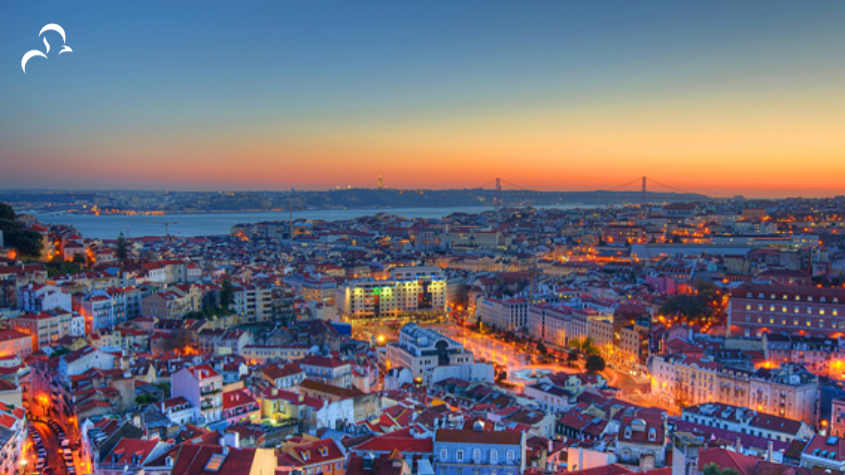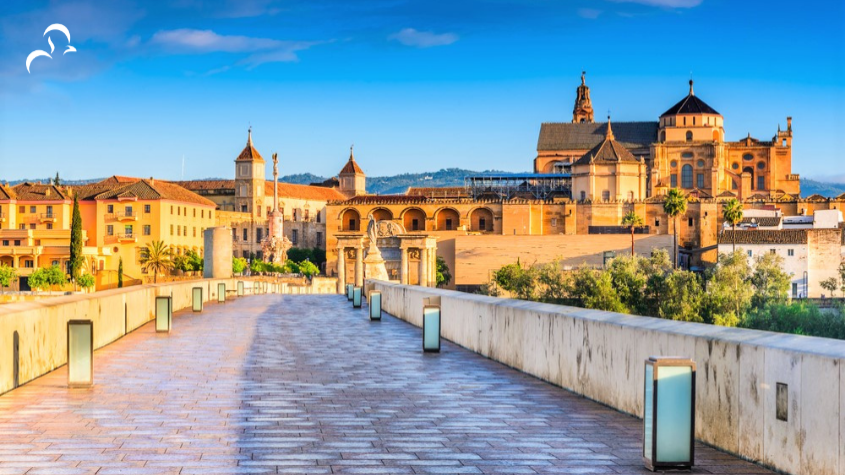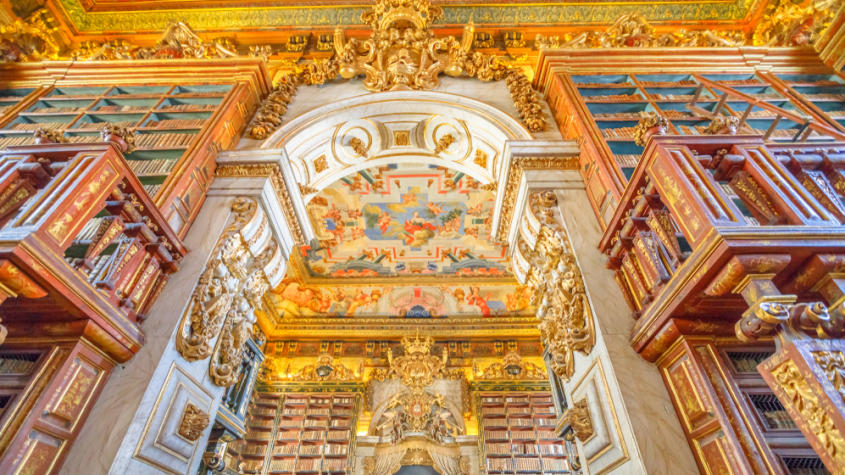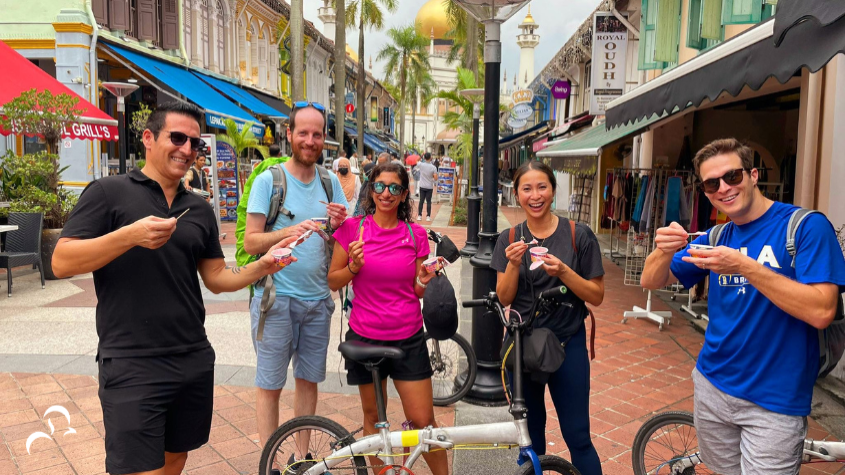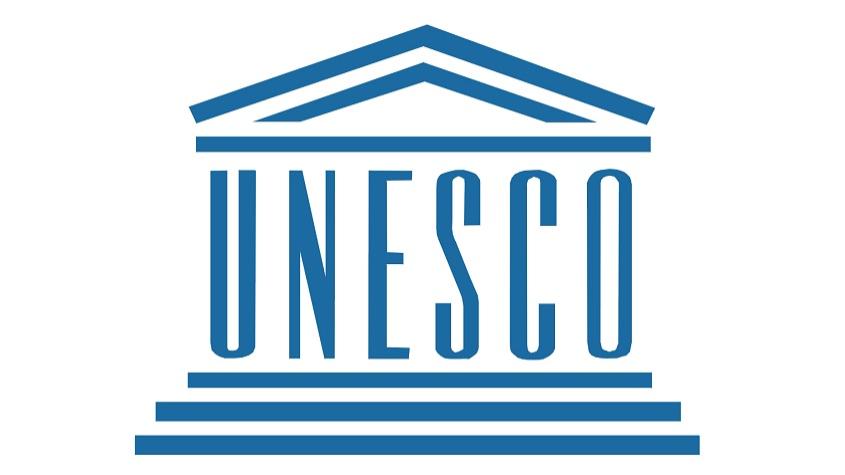
UNESCO Heritage Sites in Portugal
Portugal is the country with the oldest continental borders in Europe, since the sec. XII. In addition, it was one of the countries that most contributed to global globalization, with its maritime expansion started in the sec. XV. No wonder, therefore, that it is a country with a lot of history, traditions, cultures, gastronomy, and diverse nature. And that its inhabitants have a strong sense of identity and independence.
It has a vast material and immaterial legacy, which serves memory and inspiration. Part of the sites was submitted to the long and rigorous process of applying for UNESCO World Heritage.
UNESCO recognized and approved 25 applications from Portugal. There are 17 sites recognized as UNESCO World Heritage Sites. And there are 8 cultural expressions that have been given the status of World Intangible Heritage.
Complete list of the 17 UNESCO World Heritage sites in Portugal by date:
Central Zone of the Town of Angra do Heroismo in the Azores (1983)
Convent of Christ in Tomar (1983)
Monastery of Batalha (1983)
Monastery of the Hieronymites and Tower of Belém in Lisbon (1983)
Historic Centre of Évora (1986)
Monastery of Alcobaça (1989)
Cultural Landscape of Sintra (1995)
Historic Centre of Oporto, Luiz I Bridge and Monastery of Serra do Pilar (1996)
Prehistoric Rock Art Sites in the Côa Valley (1998)
Laurisilva Forest in Madeira (1999)
Alto Douro Wine Region (2001)
Historic Centre of Guimarães (2001)
Landscape of the Pico Island Vineyard Culture (2004)
Garrison Border Town of Elvas and its Fortifications (2012)
University of Coimbra – Alta and Sofia (2013)
Royal Building of Mafra (2019)
Sanctuary of Bom Jesus do Monte in Braga (2019)
In this article we will talk about the full list of sites that constitute the Heritage World Material of Portugal by UNESCO. The first sites officially recognized by UNESCO date from 1983 and the last from 2019.
We will start from the North to the South and we will include the Azores and Madeira.
Braga UNESCO
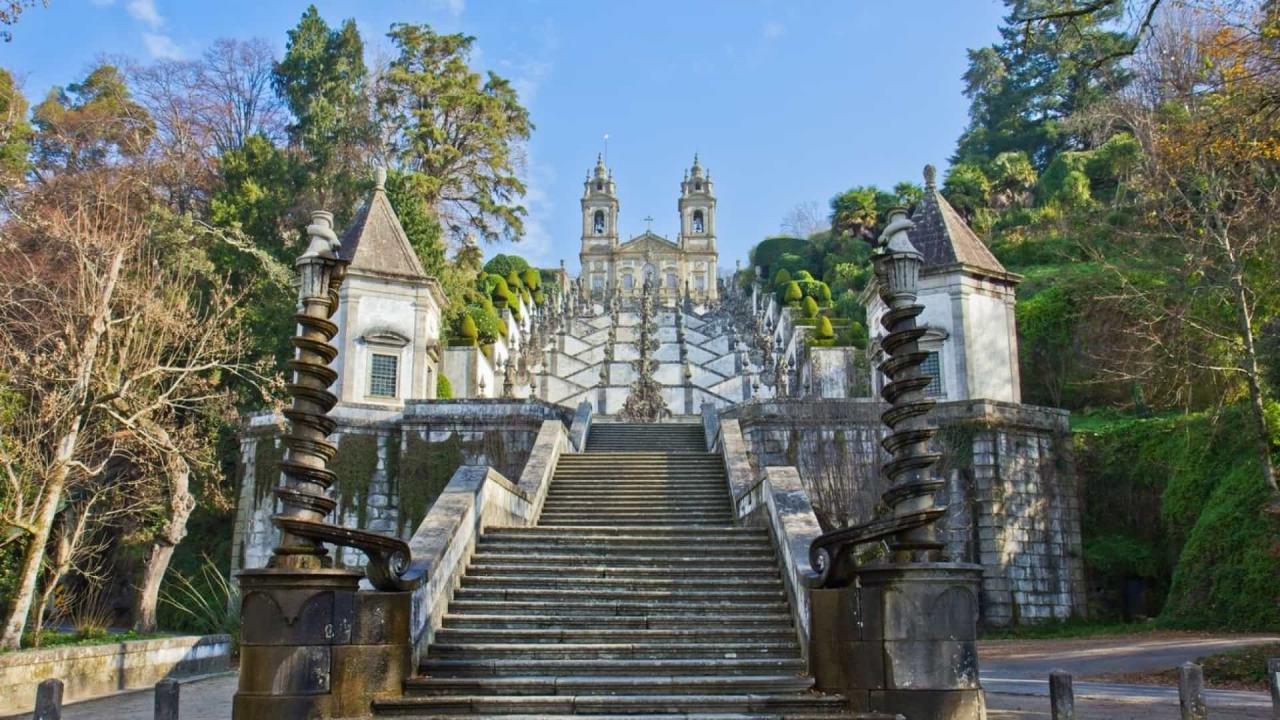
In 1373, there were already signs of contemplative activity and construction of a Chapel in the place where today is the Bom Jesus do Monte Sanctuary in Braga. The second Chapel arrived much later, in 1494. In 1629, the Confraria do Bom Jesus do Monte was created and there a chapel was built. The Sanctuary of Bom Jesus as we know it today, comes in 1722 initiated by D. Rodrigo de Moura Telles. A new basilica was completed in 1811.
To reach the top where the Basilica is, we find a huge staircase full of theological and spiritual significance. There are 573 steps in total, interspersed in staircases. The Escadório do Pórtico starts with an arch 7 meters high and 4 meters wide, and the climb is made through dense vegetation, through 376 steps. Along the way, the steps of the Way of the Cross are depicted in chapels. Then the first stage ends. Following is the stairway of 5 Senses, so called because in each stair haul there is a corresponding source to one of the human senses: sight, smell, hearing, t act and taste. The next step is the Escadório das Virtudes, so called because you can find sources alluding to Faith, Hope and Charity. If you feel tired, Largo do Pelicano (or Moisés terreiro) is ideal for taking a break on the way up, admiring the view and admiring the Baroque garden. A few more flights of stairs and you finally reach the top. The Adro do Bom Jesus, where you can see a set of statues representative of biblical characters linked to the Passion of Christ : Caifaz, Herod and Pilate on one side and José de Arimateia, Nicodemos, Centurião , among others.
The Basilica located in the Adro area is the end of this ascent, which is also intended to be spiritual. Neoclassical in style, it was designed by Carlos Amarante at the behest of Archbishop D. Gaspar de Bragança. Central and symbolic point of the entire Sanctuary. End of the walk, and pilgrimage, for believers. It is open to the public with mass celebrations and other events such as processions, baptisms or weddings.
You can also enjoy extensive gardens and a lake. Caves, undiscovered trails, bandstands, and lakes make this park a unique area of fun for the whole family. It also has restaurants, cafes and other support or leisure facilities.
The Sanctuary of Bom Jesus, is u m of the symbols of the city of Braga that much worth a visit, whether believer or not, with time preference.
Highlights and tips:
➼ Take the opportunity to ride the oldest lift (or funicular) in the world (1882), still operating.
➼ There are 17 chapels that represent the Way of the Cross at Bom Jesus de Braga. Each, worth a peek.
➼ Be sure to visit the city center, including the old Cathedral of Braga.
Category: Cultural
Official World Heritage Award Year: 2019
Guimarães UNESCO
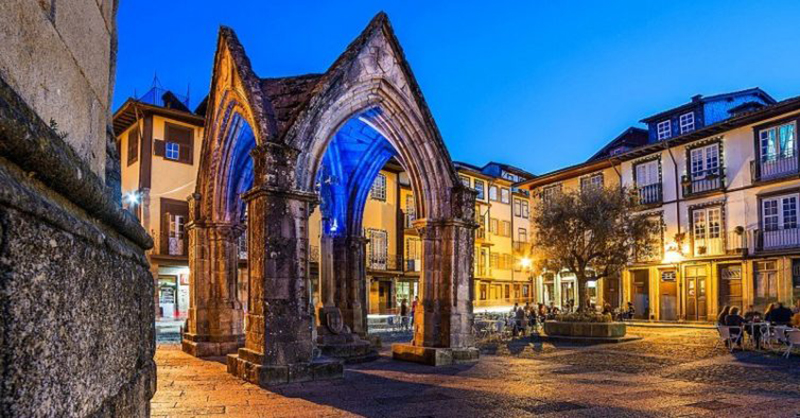
Guimarães is a unique city in Portugal, with a strong identity, a sense of roots and vibrant day or night. It is here that D. Afonso Henriques, the first Portuguese king, is presumed. It was he who assumed the leadership of the Portucalense County, the future kingdom. Guimarães was the first capital of the new kingdom of Portugal, and it proudly bears the inscription “Portugal was born here. That is why it is known as the “Cradle of the Nation”.
The historic center of Guimarães, whose history is intrinsically linked to the formation of Portugal's national identity, preserves a set of historic buildings that illustrate the evolution, from the Middle Ages to the present day. It is formed by a set of buildings, squares, and streets, of great historical and artistic value. Walking the streets of the Historic Center on foot is to discover the secrets of an ancestral cultural heritage, and the best way to visit . Narrow streets lined with unique houses, often colorful and flowery. The Rua de Santa Maria is a good example, path sixteenth century facades, wooden balconies and noble houses, such as the Arch House.
The Largo da Oliveira and the square of Santiago are central to the historic center. It is in the first one that Nossa Senhora da Oliveira Church (former convent) is located. The Gothic style predominates in the foundation of the buildings of monumental religious architecture. Currently, in these two squares you can find several bars and restaurants, cultural shows, open-air cinema and the recreation of medieval markets.
The church of S. Francisco and the Church of S. Domingos are worth a visit. Cruises are characteristic monuments, with the representation of the cross and sculptural decoration. They are scattered throughout the city. The Alberto Sampaio Museum offers dynamic and interesting exhibitions throughout the year.
The great effort to recover and preserve this historic center seems to pay off. Both for the excellent impression it leaves on its visitors, as the pride of Guimarães inhabitants.
In addition, the extension of the designated area in Guimarães doubled its size by including the Couros zone. The protection area will now be five times larger than before, stretching from the top of the Penha mountain, where the Ribeira de Couros rises, to Veiga de Creixomil, covering the mouths of the watercourses.
Highlights and tips:
➼ Be sure to visit the medieval castle of Guimarães, immortalized by Alexandre Herculano in the book “O Bobo”. And the Palace of the Dukes of Bragança, sec. XV. In the latter, try to count how many chimneys there are. Few are right.
➼ Visit the sanctuary of Penha, a hill close to the city. In addition to the church, it has activities and recreation for all ages, and a fabulous view over Vale do Ave.
➼ There are two major periods of festivals in the city: The Gualterianas in the summer, and Nicolinas in late fall.
➼ Visit Citânia de Briteiros, a well-preserved prehistoric fort, of very high archaeological value.
Category: Cultural
Official World Heritage Award Year: 2001
Porto UNESCO
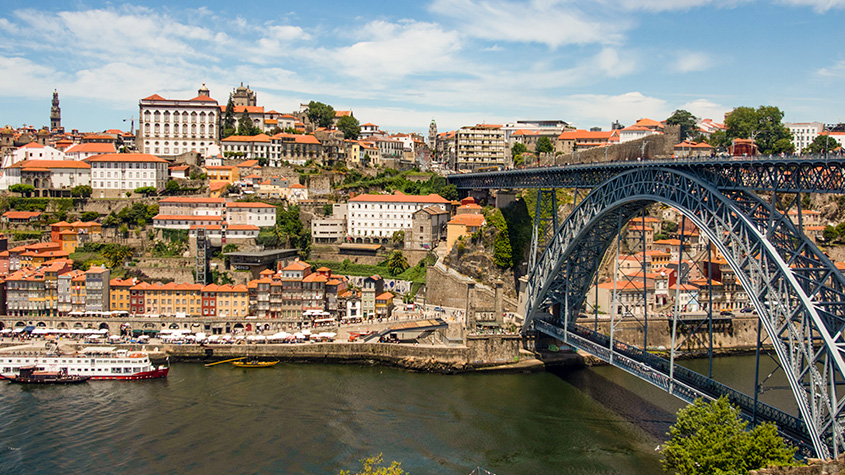
The city of Porto has been called “Antiga, Mui Nobre, Semper Leal e Invicta” , since the foundation of Condado Portucalense . It is the second largest city in Portugal and capital of the North.
Strategically well posicionad to, the oldest traces date back to the Bronze Age. Many peoples passed through here, like the Carthaginians and Romans . In the Middle Ages, the aggregating pole was a religious building (today the cathedral), which had another pole next to the river bank, associated with fishing and commercial activities. This last, was called Portus Cale , and came to give rise to the name of Portugal.
The UNESCO World Heritage Site in Porto consists of the Historic Center, the Serra do Pilar and the Luis I Bridge.
The Historic Center of Porto has a lot to see and visit:
- The station of trains of St. Benedict one of the most beautiful seasons of railways, iron world. One of the best examples of tile art.
- The Palácio da Bolsa and its Arab hall.
- The Portuguese Center of Photography always has high quality photography exhibitions and free admission. And the historic building is beautiful.
- Bairro da Sé. One of the most emblematic neighborhoods in the historic center of Porto. It still has a traditional atmosphere that is worth knowing. It is where is the Cathedral, the most important church in Porto.
- Torre dos Clérigos. One of the ex-libris of the city of Porto. Climbing the 240 steps of the spiral staircase to the top of the tower, you will have a 360-degree view of the historic center of Porto. If you have a choice, go in the late afternoon.
- The Ribeira, next to the river. It is a riverside area of traditional character even though it is a major tourist attraction. With an aging population and secular alleys, some of which can only be reached on foot. The r io Douro is always present, and the possibility of embarking on a cruise or boat trip.
- Fernandina Wall. Currently, there are at least two visitable sections of the Wall. The most interesting is the so-called Trecho dos Guindais, located right next to Ponte D. Luís.
- Walk of Virtues. Located on the edge of the area classified as World Heritage, Passeio das Virtudes is a viewpoint with privileged views over the Douro River and its bridges. Fairly quiet is a good place to relax.
- Other places of interest include the Churches of S. Francisco and do Carmo, the Casa do Infante, a former medieval customs house, the Museu Nacional Soares dos Reis, and the Teatro de S. João .
Serra do Pilar
The Serra do Pilar Monastery from the 16th century, is located in Vila Nova de Gaia (on the other side of the Douro River) but is included in the area classified as World Heritage. They have an interesting exhibition on the Portuguese UNESCO heritage. The monastery offers incredible views over the historic area of the riverside Porto. Ideal to combine with a visit to one of the Port Wine cellars.
The present plan is composed of the church, of circular plan (unique in Portugal), of the chancel, of rectangular plan, and of the cloister, also of circular plan. T anodes these structural elements, arranged sequentially.
Luís I Bridge
The Luís I Bridge is one of the icons par excellence of Porto. It was built between the years 1881 and 1888, sec. XIX, and designed by Théophile Seyrig (disciple of Gustav Eiffel) and Léopold Valentin.
Features of interest:
- Total length: 385.25 m
- Weight: 3 045 tons
- Bow: measures 172 m of rope and 45 m of arrow.
- Two pink metallic trays.
- Circulate over the bridge: Metro, cars, bicycles, and pedestrians.
It is considered one of the most beautiful bridges in Europe (European Best Destinations), and is inseparable from the city landscape of Porto.
Porto invokes a feeling of timelessness, with a vast heritage from different eras, which is unique. This “labor capital” saw its industry being leveraged by the commercialization of Port wine. The unique character of its inhabitants is revealed in its hospitality, pride, and great sense of independence from its origin.
It is a city that arouses passions.
Highlights and tips:
➼ Visit the Port wine cellars in Gaia. Ideal if you are a wine lover, but also for all the surroundings, aesthetics, and atmosphere of these Port wine mother houses, appreciated all over the world.
➼ Since the Douro River is inseparable from the city of Porto, take the opportunity to take a cruise or boat trip. You can choose between those that are on the edge of the city (such as the 6 bridges), or longer ones through the Douro Wine Region (Régua, Pinhão, among others)
➼ If you have time, enjoy cultural life such as Casa de Serralves, nightlife and the city's green parks .
➼ Taste the famous francesinha, a typical Porto dish.
Category: Cultural
Official year of attribution of World Heritage: 1996
Douro UNESCO
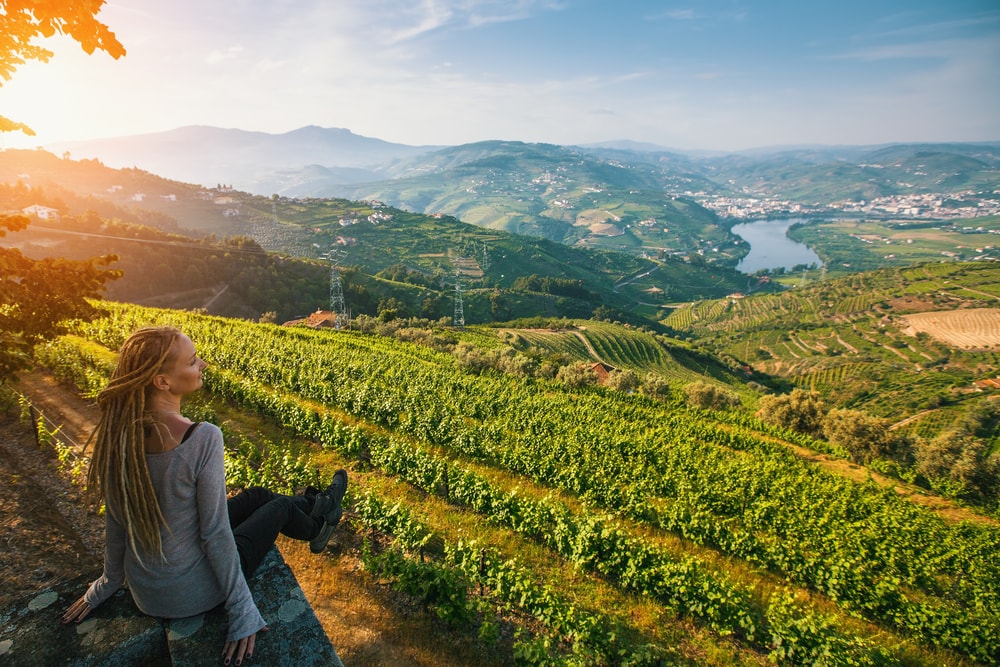
The Douro Demarcated Region is the oldest demarcated wine region in the world and is also a UNESCO World Heritage Site. Its name is due to the river Douro and its tributaries that mark this region with an extension of 250 000 hectares between Barqueiros and Barca d'Alva.
This is where Port wine is produced, famous and appreciated throughout the world. But not only. The mature wines of this area are among the most appreciated in the country. the Douro Valley is ideal for wine lovers.
The Douro has one of the most admired landscapes for its terraces that rise in the mountains, of unmistakable beauty. This region is divided into three sub-regions: called Baixo Corgo, Cima Corgo and Douro Superior. All of them are different due to climatic and socioeconomic factors.
The vineyard landscape is the result of hard work and sweat, of thousands upon thousands of men and women. Terraces, walls, farms, paths, and vineyards were built in terraces. It is a landscape shaped over space and time, with many centuries of history.
It is a hug between nature and the human being. Miguel Torga called it “a geological poem”. And this great writer knew what he was talking about.
Highlights and tips:
➼ Stroll and discover places charming the s Douro. Régua, Pinhão, Barca D'Alva are some places to start.
➼ Take the opportunity to try other quality wines, in addition to Port wines. The mature wines are appreciated in this region either m red, white or rosé.
➼ Take the opportunity to learn more about the culture of wine production. There are many farms that you can visit and learn curious details about the whole process. They usually include wine tasting. Bonfim, Roêda, Panascal, São Luiz, are just some of the many choices.
➼ There are several ways to get to and tour the Douro: bicycle, car, bus, train, boat and even some helicopter visits. All provide different perspectives and experiences. If you can, choose two and compare.
Category: Cultural
Official World Heritage Award Year: 2001
Côa Valley UNESCO
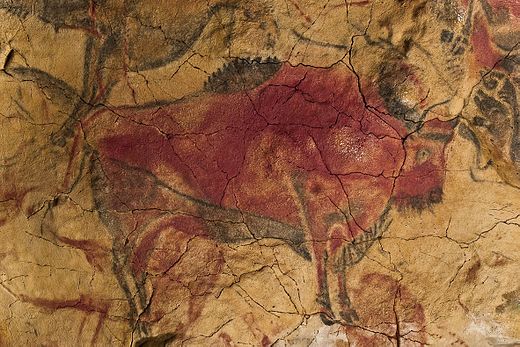
Located in the northeastern region of Portugal, is the Vale do Côa, which contains in its vast space a vigorous artistic and historical heritage. It is the result of thousands of years, in which the rock formations that delimit its bed have been converted into panels covered with thousands of engravings, made by those who lived there.
The Rock Art of the Côa Valley, a World Heritage Site recognized by UNESCO, counts more than a thousand rocks with rupestrian manifestations, identified in more than 80 different sites, with predominant paleolithic engravings, executed about 25,000 years ago. It was even found, at the Fariseu site, one of the largest rock engravings in the world, with more than 3.5 meters in length and about 23 thousand years old.
Going back to the early Upper Paleolithic, these outdoor "panels" are testimonies of a lively creativity and a mastery of design. Together they form a huge outdoor art gallery.
The motifs of the paintings and prints include anthropomorphic figures, animals and geographic signs or signs.
Attesting its enormous importance, the Archaeological Park of Vale do Coa and the National Rock Art Center were created, both based in Vila Nova de Foz Côa. They aim to give a decisive boost to the status of rock art, archeology, and heritage.
The pictures can m be apreciad the on organized tours with expert guides (by reservation): Canada's Inferno, the first to be discovered, Ribeira Robins in Muxagata and Penascosa.
The rock art of Foz Côa, is more than the memory in the geography where Portugal is located. It is a memory of the Human Being.
Highlights and tips:
➼ Vale do Coa Archaeological Park and the National Rock Art Center, can be great places to start or end your visit to the region's rock art. In addition, you can visit the museum at Quinta da Ervamoira, with a collection of traditions of bread and wine production.
➼ In addition to visiting Vila Nova de Foz Côa, they have other places of interest in the Vale do Côa. Castelo Rodrigo, Freixo de Numão, Marialva, among others.
➼ Côa Valley also has beautiful nature and landscapes. If you like outdoor activities you can go for a bike ride, go hiking, go down the Kayak River.
➼ The Archaeological Zone of Siega Verde is also worth a visit. Extension of the Côa Valley between Portugal and Spain. You can find more cave paintings and engravings. Site of UNESCO as well.
Category: Cultural
Official year of World Heritage attribution: 1998 (Vale do Côa) and 2010 (Siega Verde)
Coimbra UNESCO
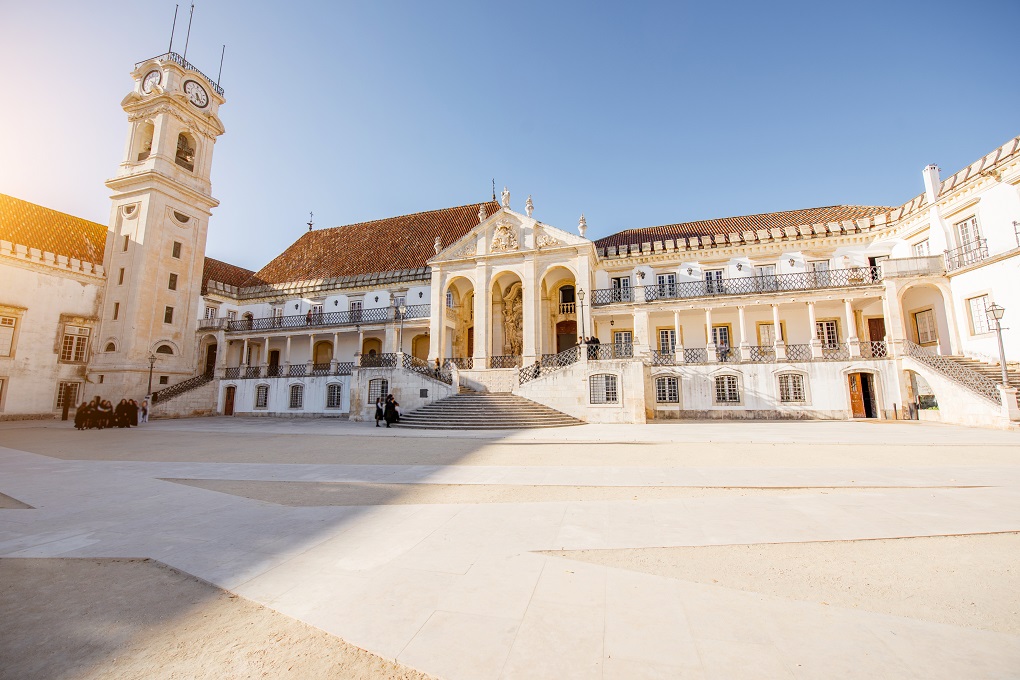
The UNESCO World Heritage Site in Coimbra includes the University of Coimbra, uptown and Rua Sofia downtown. Includes the Union of Parishes of Coimbra (Sé Nova, Santa Cruz, Almedina and São Bartolomeu).
The city of Coimbra is located in the center of Portugal and extends over the two banks of the Mondego River. Ancient Eminence of the times of the Roman occupation sec. II BC, grew in size and importance under the control of the Suevi and later Visigoths. City of commerce, during the Muslim occupation from the sec. VIII AD Reconquered by the Christians, it becomes the 2nd capital of the Portucalense county until the sec. XIII, replaced by Lisbon.
It is in medieval times that it witnesses a growth and strategic position. A symbol of this is the creation of the University of Coimbra. Built in the sec. XIII, by order of King Dom Dinis, is the second oldest university in Europe (the first is Bologna). With so many centuries of existence, it has accumulated a lot of knowledge and traditions. That is why it is known as the “student city”. With more than 20,000 students from all over the world, it is a vibrant and dynamic city. One can still see today, the use of the students ' attire, walking the streets. The center is in Alta, and the Faculty of Law with its tower, is the icon of the Academy and of the city itself. It is also known as the “city of eternal longing” for those who lived and studied there.
Among the main attractions you can visit in the High Coimbra include the New Cathedral and the Old Cathedral, Museum Machado Castro or Joannina Library. Other attractions not to be missed, the Church of Santa Cruz (and the cafe), Arco de Almedina, Monastery of Santa Clara (across the river). Fado is an old tradition in Coimbra and you can watch live shows.
Baixa de Coimbra and Rua Sofia, combine history with commercial activity. It is a good place to stroll and go shopping.
“Coimbra is a lesson” as the song says, capable of enchanting and creating exceptionally good memories.
Highlights and tips:
➼ If traveling with children, Portugal dos Pequeninos can be an excellent visit and activity for the whole family.
➼ Close to Alta, walk to Penedo da Saudade, a unique place with a beautiful view and poems engraved in stone. Or to the Botanical Garden, 100 m away.
➼ There are two major festivities among students in Coimbra: Latada in October and Queima das Fitas in May. Attend and participate if it is there in those months.
➼ Taste the suckling pig (specialty from Bairrada) and the pastries from Tentúgal.
Category: Cultural
Official year of attribution of World Heritage: 2013
Batalha UNESCO
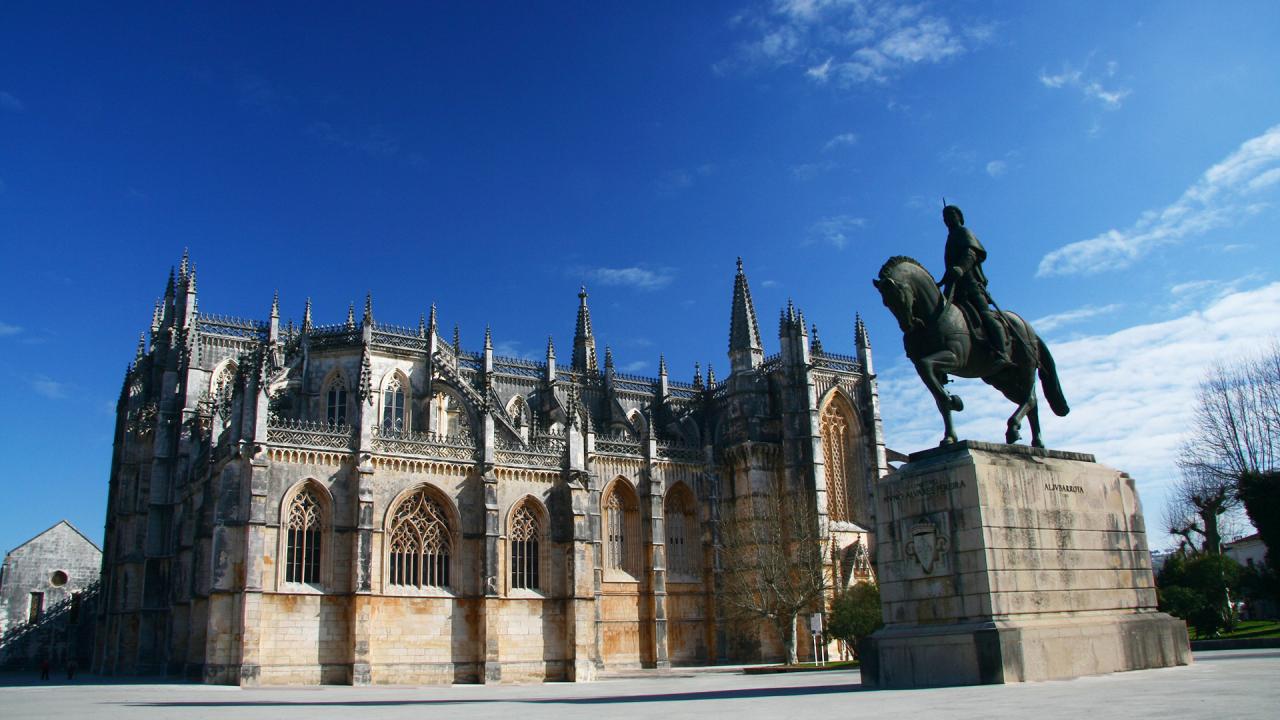
Located on the left bank of the Lena River, Vila da Batalha owes its origin to the construction of the Santa Maria da Vitória Monastery, better known as Batalha Monastery.
The Monastery of Batalha, was built in fulfillment of a promise, after the battle of Aljubarrota. This battle opposed about 7000 Portuguese, led by Nuno Á lvares Pereira (his statue is next to the monastery), to about 30,000 Castilian invaders (future Spaniards). The victory achieved by the Portuguese maintained the independence of the kingdom.
The monastery has a structure in the shape of a Latin cross with 3 naves where the central one is 32.5 meters high and 32 openings. The naves are separated by huge columns that give the impression of a single, massive wall, from the perspective of the beginning or end. The stained-glass windows of the chancel are true works of art, of color and light.
It is there that we can find the tombs of King D. João I and Queen D. Filipa de Lencastre and D. Henrique (one of the most responsible for the Portuguese maritime expansion) and D. Lopo Dias de Sousa - Master of the Order of Christ.
The Batalha Monastery represents the Portuguese People's resilience, courage, and strong sense of independence.
Highlights and tips:
➼ Don't be put off by the majestic exterior of the Monastery, discover its interior.
➼ Also visit the Church (1514), the chapel of the Holy House of Mercy, and p onte of Boutaca.
➼ Monument rich in architectural styles: Gothic, Manueline, Baroque, Neo-Gothic.
➼ Pay attention to detail and visit with time.
Category: Cultural
Official year of attribution of World Heritage: 1983
Tomar UNESCO
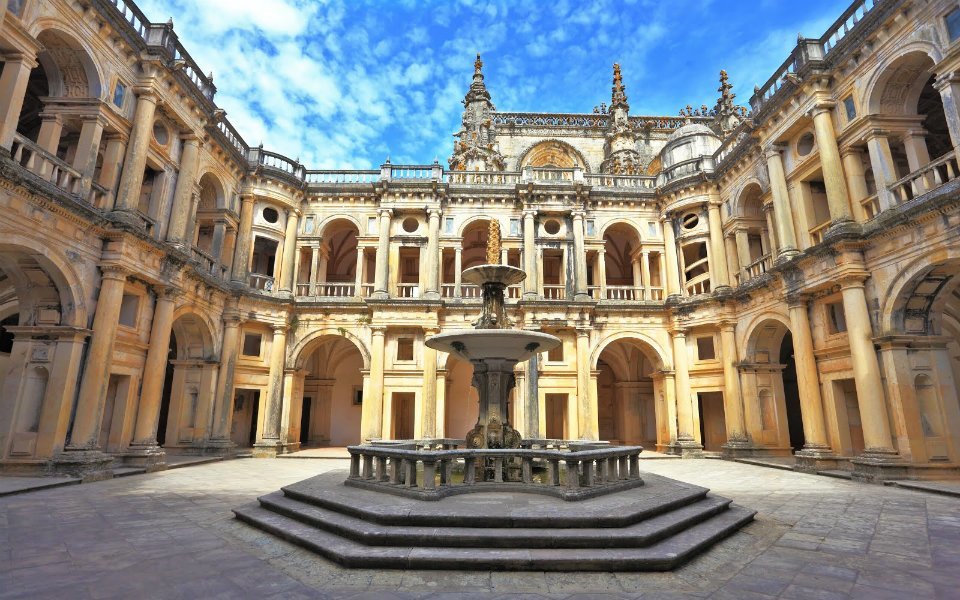
The Convent of Christ, in Tomar, is closely linked to the history of the Templars in Portugal and to the reconquest. It is D. Afonso Henriques (first king of Portugal) who donates their territory to Mestre D. Gualdim Pais, where they founded the castle and town of Tomar in the sec. XII. The entire religious-military complex of Tomar became the spiritual center and headquarters of the Templars.
The religious-military complex of Tomar includes the Castelo de Tomar, the Charola and the adjacent Manueline church, the Mata Nacional dos Sete Montes, the Chapel of Nossa Senhora da Conceição, the Pegões Aqueduct and, of course, the convent. We can find several architectural styles, which include the Romanesque, Gothic, Manueline and Renaissance Mannerism.
In the Convent, we can highlight some elements such as the Chapter Window, Charola, Main Cloister (or of D. João III) or the Filipina Sacristy
Tomar is a place that contains a lot of symbolism, mysterious, with its own aura. Searched by many who try to start in Templar gnosis, or simply are looking for their lost treasure.
Highlights and tips:
- Find out a little about the Templars and the Convent of Christ before visiting. Your experience will be much richer, and you will understand better the enormous symbolism of the place.
- Explore the charming city of Tomar.
- If you have the opportunity and like music, watch the Bons Sons Festival (August). One of the best in Portugal.
Category: Cultural
Official year of attribution of World Heritage: 1983
Alcobaça UNESCO
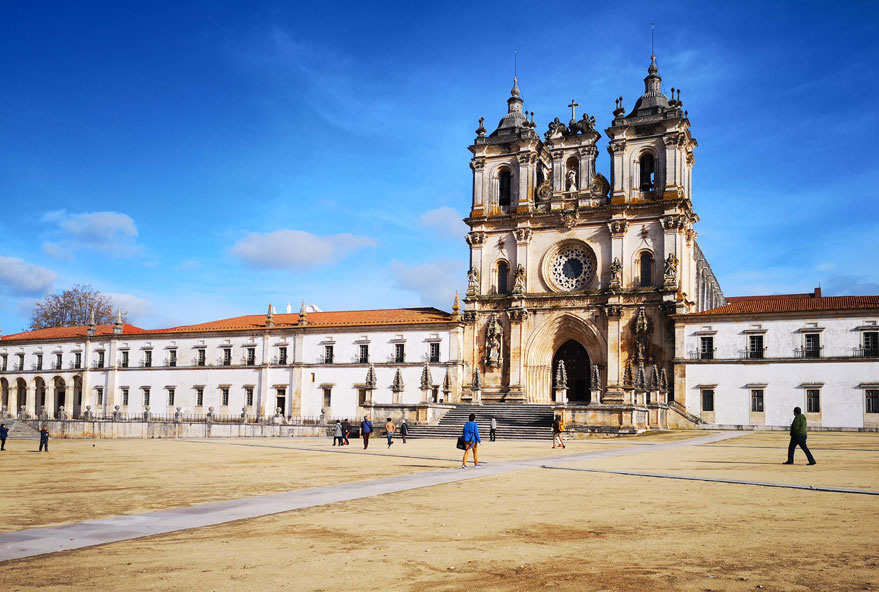
The Alcobaça Monastery, with its monumental exterior and interior, is one of the best examples of primitive Gothic architecture in Portugal. It was commissioned by King Afonso Henriques in 1153 to demonstrate the power of the new ruling dynasty and donated to Saint Bernard and the Cistercian monks (Cistercian order).
Under austere monastic life, it became a religious center, but also an intellectual one. In 1269 the first public classes were held, and these actions had a great influence on the development of culture in Portugal. In the 17th century, it was even the most important monastic school in the kingdom. The monks created illuminated manuscripts as well as prayer books and the Monastery had one of the largest medieval Portuguese libraries. The Alcobaça Monastery Library still exists, with important historical documents, which are only accessible under certain conditions.
The exterior is amazing with hundreds of meters of frontage and 20 meters high. The interior too. With thick and tall support columns, and a nave over a hundred meters long. The interior is not furnished, but neither is it empty: statues, tiles, sacristy, interior garden. You can still find the tombs of D. Pedro and his wife Inês, whose story of love and tragedy is still very much alive in the minds of the Portuguese. It contains more than 20 areas or divisions.
The Alcobaça Monastery is symbol of education, knowledge, creation and orderly life.
Highlights and tips:
➼ Taste the famous and delicious Conventual Sweets. Made in the traditional way.
➼ Visit the Alcobaça Wine Museum.
➼ Cherry liqueur, Chita de Alcobaça (fabrics) and local ceramics with specific multicolored patterns, can be good ideas for shopping and gifts.
Category: Cultural
Official World Heritage Award Year: 1989
Mafra UNESCO
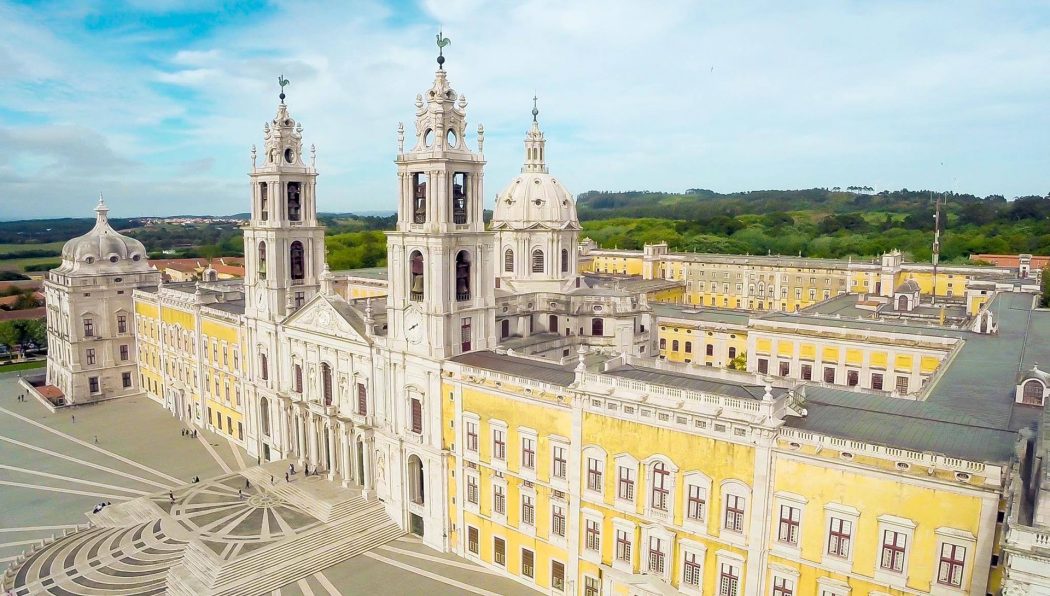
The Mafra Royal Building, a UNESCO World Heritage Site, includes the Palace, Basilica, Convent, Jardim do Cerco, Tapada. It is therefore a complex, a group of smaller buildings. It is the largest and most relevant Baroque monument in Portugal. Commissioned by King D. João V (sec.XVIII) , to the German Johann Friedrich Ludwig , it was further expanded on an initial project, to house 300 friars, and attach a royal palace to it.
It is difficult not to be impressed by the monumental grandeur of the Real Edifício de Mafra. With 1200 divisions, comprising the convent, the basilica, and the royal palace, it occupies an area of 37,790 m2. Work only possible, due to the flow of gold from Brazil (Portuguese colony, at the time). And for the dozens of thousands of workers who contributed to its construction.
The Royal Palace has two turrets; a Basilica decorated with statues of the best Roman artists, with a set of unique French and Italian vestments, and six masterful organs; two towers on the façade that house two chimes ordered to be built in Flanders, and which constitute a unique bell heritage in the world with a total of 98 bells; it also has a Library.
In 1982 the “Memorial do Convento” is published, a novel by José Saramago (Nobel Prize for Literature), in which the Convent is the main character.
Highlights and tips:
➼ Enjoy Fradinhos (queijadas) and traditional Mafra bread
➼ Visit the José Franco Village-Museum. A saloia village recreated to preserve the local memory.
➼ Visit the Tapada Nacional de Mafra, a former place for walking and hunting by Portuguese monarchs. You can also observe several animal and botanical species.
Category: Cultural
Official World Heritage Award Year: 2019
Sintra UNESCO
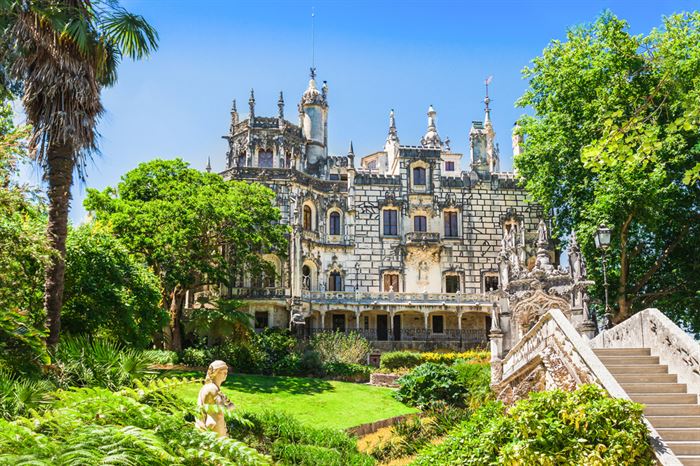
The Cultural Landscape of Sintra, results from an exceptional combination of natural and cultural sites in an original setting. From its natural part, the Serra de Sintra corresponds to it in a convincing way. With a specific climatic situation in the country, with cool summers and mild winters. Maybe this was why royalty, the court and the nobles of the country were settling in Sintra, where stands ram sumptuous villas and estates surrounded by gardens and parks of artistic style and lush flora. At the same time, the solitude of the Serra and its forests, attracted monks and hermits, who enriched it with convents and hermitages, introducing the religious-cultural aspect to it. We can call this its cultural and social part.
Whoever wants to understand the complexity and beauty of the cultural landscape of Sintra, must consider these conditions and axes of transformation.
The height of this extraordinary development was achieved with the reign of Ferdinand II in sec. XIX. The king acquired the Convento da Pena situated on a rugged mountain and transformed it into a fabulous and magical palace, giving it the maximum and romantic dimension that makes it unique.
There are several attractions that we can find in Sintra:
- Pena Palace - perhaps the most iconic and representative monument in Sintra. Its colorful and exotic architecture combines the romantic style with Arab, Gothic and Manueline influences.
- Quinta da Regaleira - A mysterious space that gives us an irresistible call for discovery. With relations with Freemasonry and the order of the Knights Templar. Its famous inverted tower, with the appearance of a spiral shaft, descends 27 meters into the ground. It would be (or will be) a path of Gnostic initiation. It also has boulevards with Greek statues and hidden works, immense gardens, and underground passages.
- National Palace of Sintra - It is a huge white palace, located in the center of the village, with several wings interconnected by beautiful gardens and patios. The result of great transformations over the centuries, its architecture reflects the passage of time, uniting the Gothic, Manueline, Moorish, Mudejar and Renaissance styles.
- Castelo dos Mouros - Initially it served as a defense post. It does not have the majesty of other monuments, but it compels us to travel a little in time.
- Monserrate Palace - Built by an English millionaire, Francis Cook. The construction takes advantage of the existing ruins of the s and c. XVI, of a chapel and a neo-Gothic style property. The decorations have Gothic, Moorish, Indian and even vegetal influences. It includes lush gardens.
- The historic center of Sintra - It is small, but full of good surprises, with narrow streets and interesting restaurants. It is there or near that several museums, restaurants and hotels are located. Many walking routes start from there. A good starting point for the visit.
Sintra is considered p or many people, the most romantic place in Portugal. Passionate to any traveler.
Highlights and tips:
➼ If visiting Sintra with children try the Toy Museum. Fun and interesting for the whole family.
➼ Site of excellence for lovers of visual arts: photography, video, painting.
➼ The gastronomic specialties include: piglet Negrais, pork to Mercy, and the goat braised. P eave, clams and mussels. Traditional sweets: Queijadas de Sintra , pillows, Pastéis da Pena, walnuts from Galamares, the fluffy ones from Belas . Colares wine is quite appreciated.
➼ Extend your tour to Cabo da Roca, known for being the most westerly point in continental Europe. A short distance from Sintra.
Category: Cultural
Official year of attribution of World Heritage: 1995
Lisbon UNESCO
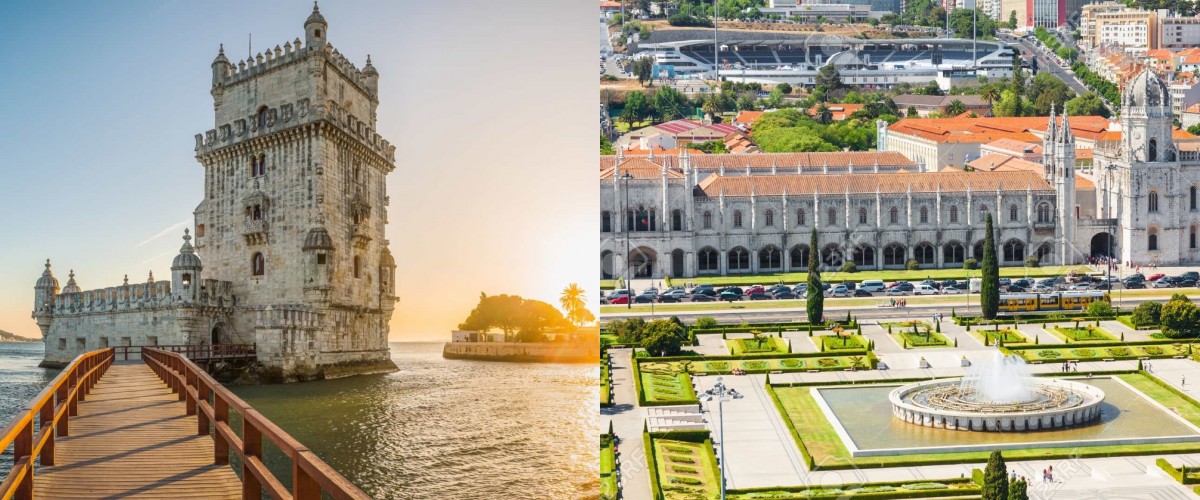
The UNESCO World Heritage Site in Lisbon includes Tower of Belém and the Monastery of Jeronimos, both located in the Belém area. Both monuments were largely funded by the Portuguese maritime trade of spices and gold.
The Torre de Belém is a monument in the form of the bow of a caravel. Dated from sec.XVI, was designed by the military architect Francisco de Arruda in the time of King Manuel I. It was built to the purpose of serving as a gateway to the city of Lisbon, and as a defense against possible invasions and attacks from the river Tagus. It was even used as a prison during the Spanish occupation. Also, telegraph signpost, customs register, and lighthouse. The building was initially located on an islet in the middle of the river, surrounded by water. Currently, he is leaning against the margin.
The Torre de Belém structure includes the four-story tower, 35 meters high, with 4 floors and a terrace overlooking the surrounding landscape, on the north face of the bastion. And the bastion, in the shape of an irregular hexagon.
The elements attest to the significance it had as a symbol of maritime discoveries and real power. They include royal weapons, the armillary sphere, and the cross of the order of Christ; the s kills dogs and niches are decorated by sculptural ornaments (Manueline style) as the shields with the cross of Christ's order; a statue of the Madonna and Child of Belém, in front of the tower; at the base of the watch towers we can see images of wild animals, including a rhino, which is considered the first sculpture of this animal in Western European art. A small cloister, and finally, old cannons (left-handers).
It became a symbol of the Discoveries P ortugueses and icon of the city of Lisbon.
About 1 km (on foot) from the Belém Tower, is the Jerónimos Monastery. It dates from the beginning of the 16th century, ordered by King D. Manuel I, who donated the monastery Ordem dos Frades de São Jerónimo. Master example of Manueline architecture and connected to the Discoveries, this monastery, is one admirable set monastic Portuguese and one of the main churches-hall Europe.
The structure includes the facades, the Church of Santa Maria de Belém, whose ship has six perfectly carved columns and tall, with beautiful stained-glass windows. Flanked by pictures, representing scenes from the Passion of Christ. Cloisters, huge patios, from where it is possible to look at its long and highly decorated balconies. The ome rooms were made available to compose a timeline of discoveries Portuguese along with the lines of the country 's kings. It also includes the wing of the chapter, cafeteria, library and donations.
In the interior, there is a hall-church, a masterpiece of Manueline with a vault without supporting columns, the tabernacle in silver. Tombs of Portuguese royal figures such as Manuel I or Pedro I, and some of the largest Portuguese figures: Da Gama, Camoes, Fernando person. And saints, like Saint Vincent.
Currently, the monastery is occupied by a charity that houses orphans and homeless people, the Real Casa Pia de Lisboa.
Highlights and tips:
➼ Also visit the historic districts of Lisbon: Alfama, Mouraria, Bairro Alto, Graça, Chiado, S. Vicente and Baixa Pombalina. An experience of an old and popular Lisbon.
➼ Enjoy the viewpoints of Lisbon and its hills to see and capture in image the combination of this asymmetrical city, with lots of light, on the banks of the Tagus and by the sea.
➼ Watch live fado shows, with or without traditional dinner. A unique experience that you will remember.
➼ Taste the famous and sweet tooth pastries of nata and belém. Find the differences between the two.
Category: Cultural
Official year of attribution of World Heritage: 1983
Elvas UNESCO
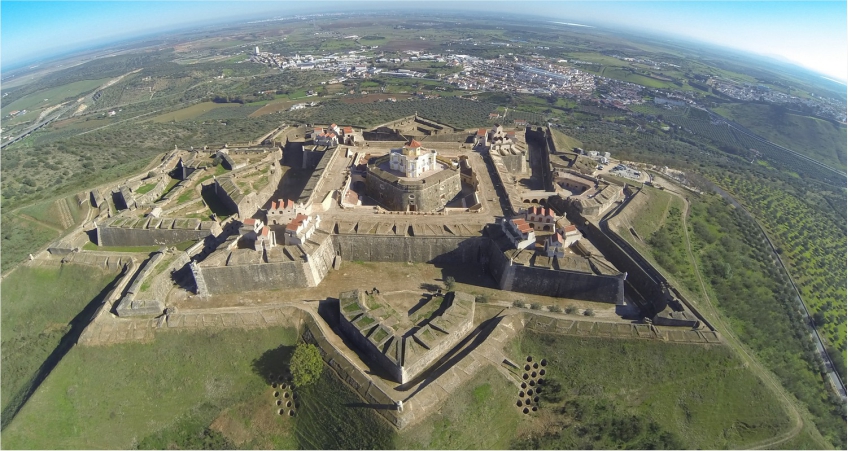
Elvas, known as "Rainha da Fronteira", is the largest fortified city in Europe. Its fortifications, together with the Fortes de Santa Luzia and Nossa Senhora da Graça, are one of the largest and best-preserved bastioned fortifications in the world.
Located in the Alentejo region, the original settlement dates from Roman times. It was during the Muslim occupation that the first fortifications appeared, one in the ninth century and the other in the twelfth century. Which reveals its strategic position of crossing and border. The from the XIII century, Elvas has become an integral part of the Portuguese kingdom. It acquired its status as a “city-fortress” during the War of Restoration of Portuguese independence, from 1640 to 1668.
About 3 km north of the historic center of Elvas, is located the Fort of Nossa Senhora da Graça. It is one of the forts that constituted the line of defense of the fortress of Elvas. To the south is the Santa Luzia Fort, converted into a military museum.
The fortress city of Elvas, was essential as a point of advocacy and support, for the Independence of Portugal face Spain.
Highlights and tips:
➼ Visit the historic center of Elvas, their r typical mares, the castle, which is a national monument, the Church of Our Lady of the Assumption and Fernandina Tower (former prison).
➼ Explore the Municipal Museum of Photography and the Museum of Contemporary Art.
➼ Admire the largest aqueduct in the Iberian Peninsula - the majestic Aqueduct of Amoreira Sec. XVI-XVII, with about 7km in length and 843 arches.
Category: Cultural
Official year of attribution of World Heritage: 2012
Évora UNESCO
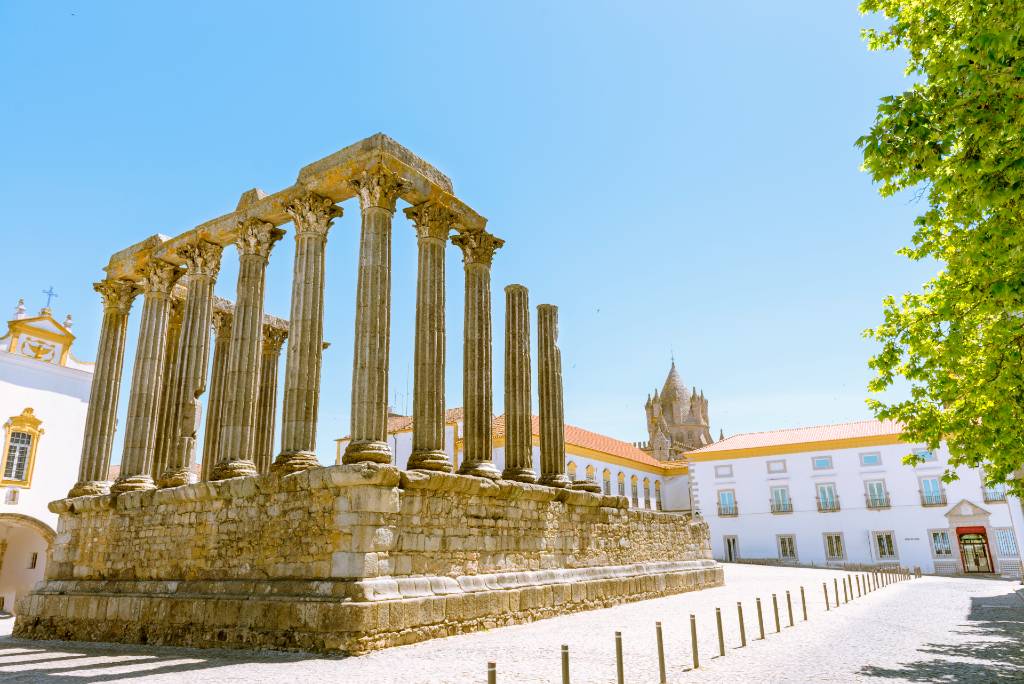
Évora, the c apital of the Alentejo region, is considered one museum city. City traditional and quiet, with much charm throughout the historic center inside the wall. typical streets, white houses with colorful details, and friendly and hospitable inhabitants.
J prehistory was populated in the region having been retained traces. The s Eburones have even given rise to the name Évora (of Eburos, Celtic word). During the Roman rule, Évora came to be called Liberalitas Julia. It is from this time the best-known monument in the city, the Roman Temple, dedicated to the goddess Diana or a tribute to Emperor Augustus or both. Built in one of the highest points of the city, it holds 14 of its original Corinthian columns. Symbol of the city and perhaps the most photographed monument in the region.
Another of the marks of the past that make Évora a UNESCO world heritage site is the Cathedral, the best-known building from the medieval period. Its construction began in 1186 and was completed in the 13th-14th centuries.
This City- museum is a model that inspired the construction of Brazilian cities like Salvador. Exceptionally beautiful and peaceful.
Highlights and tips:
➼ Take the opportunity to learn more about Alentejo gastronomy. Bread, wine, and oil are unavoidable.
➼ In addition to the Roman temple, visit the Cadaval Palace, the Évora Cathedral and the Lóios Church.
➼ If you have the opportunity do the Évora Prehistoric Megalithic Circuit.
➼ Relax in the central square of the Giraldo or in the public garden (especially on hot days).
➼ Visit the University of Évora, the second oldest in Portugal. Or the numerous Museums and Interpretation Centers.
Category: Cultural
Official year of attribution of World Heritage: 1986
UNESCO Azores
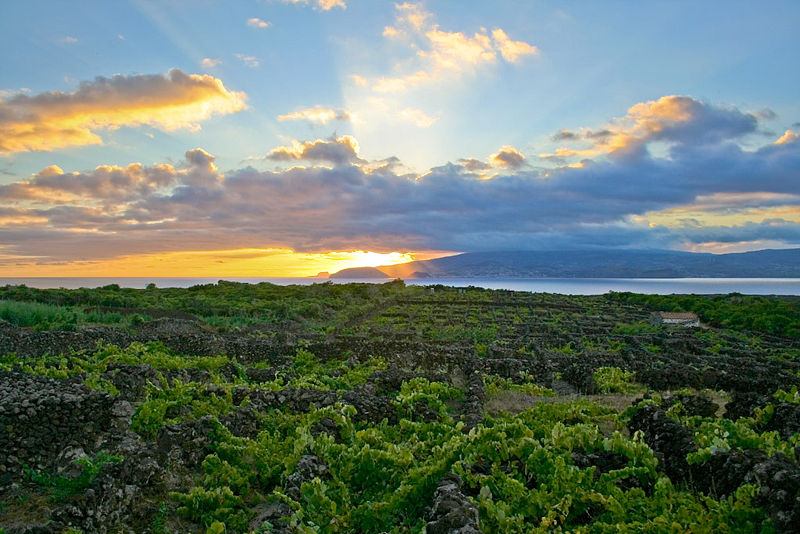
The material world heritage of the Azores consists of the landscape of Cultura da Vinha (Pico Island) and the Central Zone of the City of Angra do Heroísmo (Terceira Island). The entire archipelago of the Azores has a geological formation of volcanic origin and the landscape is marked by the presence of volcanic cones. Of a markedly Atlantic nature, it was and is a bridge between the European continent and the American continent.
Pico Island is the second largest island in the Azores Archipelago, with a regional airport and maritime connections.
The landscape of Cultura da Vinha is causally linked to the wine industry on the island. It began with the arrival of settlers on the island in the 15th century. It is the result of a secular struggle between its inhabitants and hostile nature. Starting with the planting of the vine in a rocky and apparently unproductive soil, buffeted by the wind and with a climate far from ideal. In the construction of the amazing network of long stone walls, called "corrals" or "curraletas", which run parallel to the coast and penetrate towards the interior of the island. Had as the objective of protecting the wind came and rocio. Seeing it from the air it looks like a huge mosaic dotted with houses and farms, of hermitages, ports and tide wells. Thus, a unique landscape was formed over the centuries, with direct influence on the socio-economy of the island of Pico.
Thanks to the volcanic soil, rich in nutrients, the micro-climate of dry and warm slopes, will protect the walls, aquecid to the sun's rays, the vineyard culture thrived. The Verdelho variety, which was introduced in the 15th century, is a living example today.
The area covers a total area of 987 hectares, surrounded by a buffer zone of 1,924 hectares. It partially branches the North and South coasts, and the west coast of the island. Sites of reference and landscape emblems are the Lajido the Old Creation and the Lajido Santa Luzia, deployed in extensive lava fields.
Also, worth mentioning are the elements of biodiversity and geodiversity, with particular emphasis on the existence of endemic species of flora and fauna and Geosites.
Many people ask, " why is the Landscape of the Vine Culture on Pico Island considered Cultural and not Natural?" It is considered cultural because it represents it was shaped by the human hand, in a constant fight against factors adverse to the cultivation of the vine. A landscape created with techniques, methods, and above all, a lot of will, well integrated into the nature of the island. Enjoy and admire.
Highlights and tips:
➼ If you can, make a climb to the highest point in Portugal, Pico Mountain with 2351 m. You don't need to climb to the top to enjoy the ride.
➼ Visit the Wine Museum, which the county d and Magdalene. With history and processes of wine culture.
➼ Take a boat trip, watch dolphins and whales and other marine species. Great for children.
Category: Cultural
Official year of attribution of World Heritage: 2004
Central Area of Angra do Heroísmo
Angra do Heroísmo is called “Always loyal city” for the way it resisted Spanish intrusion for its support in the context of the Portuguese Civil War (1828-1834). It is located on Terceira Island in the Azores archipelago.
By letter sent by Infanta Dona Beatriz on April 2, 1474, village in 1478, and city in 1534, the captaincy of Angra was donated to Álvaro Martins Homem, who from the so-called Ribeira dos Moinhos laid the foundations for the future economic development of village. Its port is of historical importance, in support of the armada and commercial and fishing vessels.
The urban structure of Angra is the basis of its character as a city built on the border of Modernity, situated between the Old and the New World, both in time and space. The city plan is thus defined by an axial structure, with parallel axes arranged perpendicularly to the sea and all cut by a large street (that of the Cathedral), developed towards the coastline.
It has a rich religious and civil cultural archive, with many museums, churches, convents, empires, castles and forts. As for example, the Cathedral of Angra 1570-1642, the College of the Society of Jesus, 1658-73, the Convent of S. Francisco of the century. XVII, or the Fort of S. João Baptista, the most imposing construction of military architecture of the island.
The urban civil architecture has its most significant examples in Captain's House, the so - called Casa de Dona Violante do Canto, solar sixteenth century; at the Bettencourt Palace; at Casa do Contratador Prudência; and the City Council.
Throughout the island of Terceira, and in Angra, the small buildings dedicated to the cult of the popular Divino Espírito Santo are famous. C hamados of "Empires", simple type, which resemble the small chapels, with pediment, and with a crown on top, on which rests the dove of the Holy Spirit.
The Angra do Heroísmo center is the best urban example of a culture, which synthesizes the specifics of the island and its intimate relationship with the sea, such as nature, fishing, commerce, and the Atlantic passage.
Highlights and tips:
➼ Take advantage of guided tours on foot and specific itineraries through the historic center such as Azorean Baroque.
➼ Visit the beach towns of Victoria and Lages.
➼ If you are on the island on May 23, participate in its most famous party: the Divine Holy Spirit Festival where bread, meat and wine are distributed, processions are attended, and other rituals.
Category: Cultural
Official year of attribution of World Heritage: 1983
Madeira Island UNESCO
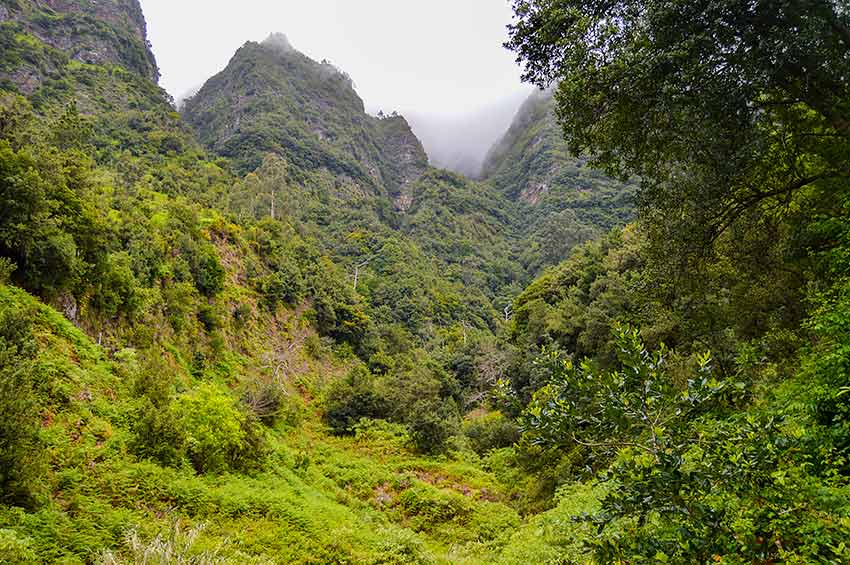
The Laurissilva Forest on the island of Madeira, is an indigenous forest of Madeira, made up mostly by trees and evergreen shrubs, color dark green and flat. Date of the Tertiary Period, 66 to - 1.6 million years BC, being considered a important living memory of that period. Its name means “laurel forest”. And in fact, it is the largest laurel bush in the world. It is also the only UNESCO world heritage site in Portugal of the “natural” category.
It occupies an area of about 15000 hectares, equivalent to 20% of the island's territory and is located, essentially, on the North coast. Included in the Natural Park of Madeira and part of the Natura 2000 network will still belongs Biogenetic Reserves Network. Recognition that shows the unique value of its fauna and flora.
The biodiversity of Laurissilva Forest has many endemic species and / or endemic degrees. Centennial trees, such as Barbusano, Loureiro, u Pau-branco; endemic shrubs, such as Massaroco, or Figueira-do-inferno; fetuses such as the button-fetus, and lichens which are a good indicator of high environmental quality. F showy lores, such as the cross over, the Orchids from the saw and Douradinhas.
There is a small number of bird species and a high rate of endemism. Like the Dove Pigeon, also known as a tree sower, the Bis-bis or the Chaffinch. Other vertebrate animals such as the gecko or bat can also be seen. And xistem still more than 500 endemic species of invertebrates, distributed by molluscs, arachnids and insects.
In the Laurissilva Forest area there is a network of pedestrian and footpaths, which make it possible to stroll and discover the beauty and antiquity of this unique ecosystem.
A living monument, an ecosystem that houses a unique biodiversity, which must be protected and respected.
Highlights and tips:
➼ Take the opportunity to visit the famous Levadas (water levels), with interesting walking paths on the island.
➼ If you can, watch the Flower Festival (May) or New Year's Eve in Madeira, on a cruise overlooking the spectacular fireworks display.
➼ In the forest we recommend bring binoculars, camera photographic and appropriate clothing for the environment and season. Vehicle tours may be a good idea, given its enormous length.
➼ There are guided boat trips where you can witness the beauty of the island and watch dolphins and other cetaceans.
Category: Natural
Official World Heritage Award Year: 1999
Madeira cruises and boat tours
Indicative list of 18 new sites proposed for UNESCO World Heritage in Portugal:
- Magalhães Route. First around the World
- Wild Islands
- Levadas of Madeira
- Roman Salting and Canning Fish Industrial Complex in Troia
- Aqueduct of Águas Livres
- Historic Lisbon, Global City
- Lisbon Pombaline
- Barefoot Carmelite Desert and Palace-Hotel Building Set in Bussaco
- Set of Architectural Works by Álvaro Siza in Portugal
- Mid-Atlantic ridge
- Southwest Coast
- Mounted, Cultural Landscape
- Calouste Gulbenkian Foundation Headquarters and Park in Lisbon
- Portuguese pilgrimage paths to Santiago de Compostela
- Abaluartada Fortresses of the Ray
- Vila Viçosa, Renaissance ducal village
- Globalization Places
- Mértola
Applications submitted in 2016-2017.
Have you decided which UNESCO Heritage sites you want to visit in Portugal? All or most? This is great. We hope that your visit itinerary is full of discovery and fun.
Also discover the UNESCO World Heritage in Spain.
Did you like it?
Average votes: 4.23 of 5
Go Back to the Blog







